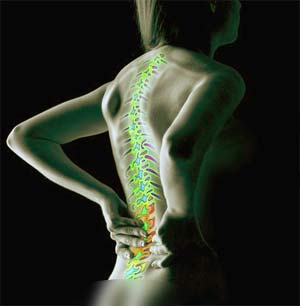Pelvic Inflammatory Disease

Pelvic Inflammatory Disease (PID) is an infection in the reproductive organs of a woman. Sexual contact or pelvic surgical procedures are common causes of PID. It is essential to treat the symptoms of Pelvic Inflammatory Disease immediately when noticed. Failure to do so may lead to complications that can be life threatening. It is estimated that nearly 1 million women in the US face a bout of PID each year. Sexually active teenagers are a particularly high-risk category. Find out how you can identify the symptoms of this disease. What is the treatment for PID?
Cause of Pelvic Inflammatory Disease
Sexual contact with a person who has gonorrhea or chlamydia is a common cause for Pelvic Inflammatory Disease. Women who have multiple sexual partners or partners with symptoms of chlamydia or gonorrhea infections are at a higher risk for PID. Usually the cervix prevents the spread of bacteria into the internal organs. But when the cervix gets infected with an STD (Sexually Transmitted Disease), disease-causing bacteria travel up the internal organs and damage the uterus, fallopian tubes, ovaries and abdomen.
Bacteria present in the vagina and cervix can also have a precipitating effect on the Pelvic Inflammation. Usually multiple organisms are responsible for a bout of PID. Spreading of the infection can lead to further inflammation and scarring. PID can occur after a surgical procedure such as D and C (Dilation and Curettage), insertion of IUD (Intra Uterine Device) or treatment of an abnormal Pap smear.
PID can lead to infertility in some of the cases. PID leads to an increased chance of tubal or ectopic pregnancy. PID causes changes in the normal anatomy of the genital tract. The risk of ectopic pregnancy is increased on account of the partial blockage or distortion of the fallopian tubes due to infection.
Pelvic Inflammatory Disease Symptom
PID is characterized by pain in the lower abdomen. Abnormal vaginal discharge with unusual odor and color is a common sign of PID. Lower back pain and irregular vaginal bleeding are other signs of Pelvic Inflammatory Disease. Irregular periods or spotting or cramps throughout the month are also noticed. Women suffering from PID experience high fever and chills. Other symptoms of Pelvic Inflammatory Disease are pain during intercourse and dull pain or tenderness in the stomach. Some women suffering from PID do not face these symptoms and diagnosis becomes difficult. Since the cervix dilates slightly during menstruation, extra care should be taken during this period against any possible infection.
Pelvic Inflammatory Disease Treatment
The health provider will conduct a pelvic examination and examine the woman's sexual and menstrual history. Pelvic Inflammatory Disease can be diagnosed with falloposcopy - a visual study of the inside of the fallopian tubes. Other tests that are used in the diagnosis of PID are pelvic ultrasound, endocervical culture and WBC test. Surgeons may resort to laparoscopy to view the internal abdominal and pelvic organs to take specimens for culture. Antibiotic therapy of Floxin is used as oral medication for PID. This is the first FDA approved oral therapy for PID. Other drugs used in combination for treatment of Pelvic Inflammatory Disease are Cefoxitin, Oflaxocin, Clindamycin.
Chronic Pelvic Inflammatory Disease
Chronic Pelvic Inflammatory Disease usually begins with acute STD, which may go undiagnosed for years. This results in chronic inflammation of the internal genital organs. This leads to scarring and tubal blockage. Chronic PID leads to the formation of adhesives around the pelvic organs. Ovaries tend to develop cysts. Chronic Pelvic Inflammatory Disease is characterized by pelvic pain of varying pattern and severity as well as high fever.
Pus may accumulate inside the uterus and the cervix may become scarred and narrowed. Usually at this stage, surgical removal of ovaries and fallopian tubes is the only solution after a long course of antibiotics and anti-inflammatory steroids. In some cases, microsurgery can help in removal of the adhesions thereby saving the fallopian tubes. Women undergoing treatment for PID must refrain from sexual contact or use barrier contraceptives.
Usually the partners are also treated as they might be infected with the organisms that cause PID. Besides there is risk of re-infection even if the partners do not suffer from any symptoms. Pelvic Inflammatory Disease must not be ignored and requires immediate medical attention. Untreated PID can cause permanent damage to the internal organs.
Top of the Page: Pelvic Inflammatory Disease
Tags:#pelvic inflammatory disease #pid #pelvic inflammatory disease symptom #pelvic inflammatory disease treatment #pelvic inflammatory disease cause

Inserting Tampon
Pre Menstrual Syndrome Symptom
Painful Menstrual Cramps
Prolonged Menstruation
Menstrual Regulation
Menstruation after Birth
Menstrual Cup
Menstruation and Breastfeeding
Dysfunctional Uterine Bleeding
Breakthrough Bleeding
Uterine Fibroid Embolization
Vaginal Bleeding After Menopause
Menopause Symptom
Hormone Replacement Therapy
Black Cohosh
Pelvic Inflammatory Disease
Top of the Page: Pelvic Inflammatory Disease
Popularity Index: 100,820

